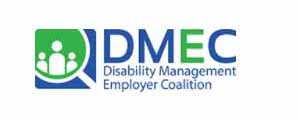Coming up with a catchy intro for the quarterly newsletter is always the most challenging part of this initiative (Dear TPG, please don’t look at my Google search history. Thank you in advance.). My goal is to use a classic, recognizable song title, applicable to the workplace dynamic we are currently facing. Of course, I find myself second-guessing if the song lyrics are offensive or if they help drive home the message. “Whatever It Takes” by Imagine Dragons is what resonated this go around.
After feeling a bit deflated at the end of 2021 (I believe I referred to 2021 as a “special kick to the pants”) and that COVID was a Stage 5 clinger we couldn’t shake, my tune has changed. While the world is facing a new set of challenges and heartbreak, most of us feel our lives are starting to get back to normal, at least with regards to COVID.
And more than that, when I reflect on the past two years, I feel all of us did “whatever it takes” to get through the trials thrown our way. We were “run like a racehorse,” “pulled like a ripcord,” and broken down and built up.
Just like this meme, we are now prepared in ways we never imagined to succeed in navigating workplace obstacles.


DOL ANNOUNCES INCREASE IN FMLA AUDITS
In February, the Department of Labor announced they would increase FMLA audits, particularly for the warehouse and logistics industries. FMLA is the meat in TPG’s leave of absence sandwich (and it’s filling). We have worked with many of you in reviewing your FMLA policies, posting requirements and regulatory notifications, but it’s all the more important we ensure we dot those “i’s” and cross those “t’s” when it comes to FMLA compliance, so please contact your Account Manager if you have questions or concerns about your FMLA practices.
FMLA FAQ

Pretend you have an employee on FMLA for pregnancy disability that later transitions to bonding. The employee emails you, stating “I won’t be back on the 18th, I’m having a hard time finding childcare, so I am going to stay home until the baby is 6 months old. I appreciate everything you have done for me, and I will let you know when I am ready to come back.”
So, now what? Is the EE resigning? Do you need to continue to hold their job? Can you separate employment?
Let’s review the regulations, shall we? FMLA outlines: “If an employee gives unequivocal notice of intent not to return to work, the employer’s obligations under FMLA to maintain health benefits (subject to COBRA requirements) and to restore the employee cease. However, these obligations continue if an employee indicates he or she may be unable to return to work but expresses a continuing desire to do so.”
In this example, the email does not rise to the level of “unequivocal notice of intent not to return.” If you would encounter similar messaging, we recommend making an outreach to confirm your employee’s plan. If during that conversation you receive a resignation, then you have “unequivocal notice” but if the employee asks for more leave, we advise you to apply applicable statutory and/or company leave.
But as we all know, leave scenarios may have multiple statutory plans in play. While FMLA allows us to separate employment if an employee gives unequivocal notice of their intent not to return, Oregon does not. Oregon Family Leave Act regulations outline: “If an employee gives unequivocal notice of intent not to return to work from OFLA leave the employee is entitled to complete the approved OFLA leave, providing that the original need for OFLA leave still exists.”
Key Takeaway: It is important to evaluate all leave laws in play if you receive a resignation notice from an employee during a statutory leave. We also advise having a clear understanding of the employee’s intent in order to meet the threshold of “unequivocal notice.”
CASE LAW
![iStock-1130775755 [Converted] iStock-1130775755 [Converted]](https://www.thepartnersgroup.com/wp-content/uploads/2022/03/iStock-1130775755-Converted-372x300.png)
While Human Resource professionals wear a lot of different hats and I encourage all of you to have the same level of confidence walking into any room as my kid does walking into the bathroom when I am using it, doctor is not one of them and this court case demonstrates why.
In this case, the plaintiff applied for a forklift operator position, a role he previously successfully maintained. Plaintiff was also taking prescription opioids for pain. When the employer was made aware of the prescription, they asked the plaintiff to provide a physician’s note confirming the medication would not create a safety risk. The plaintiff returned multiple notes certifying “no concerns have been raised over his ability to perform his occupation while on these medications.”
The employer ultimately did not hire the plaintiff because they were concerned about the safety risk. The employer regarded the plaintiff as impaired due to the side effects of his medical treatment. Additionally, the employer failed to have any conversations with the plaintiff about the physical requirements of the role or engage in a discussion with the physician.
The case hasn’t yet been determined by the jury but let’s discuss some basics.
A disabled individual is not “qualified” if he or she poses a “direct threat” to the health or safety of others that a reasonable accommodation cannot eliminate. Remember, the plaintiff provided multiple notes from physicians outlining he can safely perform the job, but unfortunately it appears the employer made a decision based upon assumptions and stereotypes. It’s important for employers to conduct an “individualized assessment” in “good faith” to determine whether the employee’s disability disqualifies the employee from a position. By not engaging in conversation with the employee or provider about the role, it seems this step was missed. An employer is more likely to prevail if they can show the employee is not qualified, but because the individualized assessment was not completed, the employer is at an immediate disadvantage.
When an employer declines to hire an applicant out of concerns that the applicant’s disability renders the applicant a direct threat to workplace safety, there are four factors an employer should consider in conducting the individualized inquiry. These factors are: “(1) the duration of the risk; (2) the nature and severity of the potential harm; (3) the likelihood that the potential harm will occur; and (4) the imminence of the potential harm.” An employer cannot deny an employment opportunity to an individual with a disability merely because of a slightly increased risk. The risk can only be considered if it’s significant.
At TPG, we regularly hear concerns about returning to work even when a provider has released an employee. Generally speaking, it is our advisement to take the word of the medical provider, unless you have objective evidence that the employee’s presence is a safety risk to themselves or others.
UPCOMING EVENTS

DMEC’s Annual Conference will be held August 1–4, 2022, in Denver, CO. Your favorite TPGers (that’s us!) will be on hand and our very own Patty Borst will be presenting on harnessing HR technology to simplify the leave process for employees and the HR team. We hope to see you there!
STATE UPDATES
CALIFORNIA
COVID-19 Supplemental Paid Sick Leave
Ahh California, I love you? In Q4, I wrote that the state’s COVID-19 Supplemental Paid Sick Leave had expired. Well, just kidding! In typical California fashion, it was resurrected months after expiration and made retroactive to make life that much easier for California employers.
As a recap, the law was originally enacted in April 2020 and expired December 31 of that same year. California resurrected the law in March 2021, making it retroactive to January 1, 2021, but it again expired September 30, 2021. CA brought it back for 2022 – making the law effective February 19, 2022, and retroactive to January 1, 2022. The law will sunset (allegedly) on September 30, 2022.
The 2022 edition put on a new outfit and has a slightly different look than prior versions. This time around, there are two different buckets of leave available to covered employees, each allowing up to 40 hours of entitlement. The first bucket can be used if the employee is caring for themselves or a family member, or the absence is vaccine related. The second bucket is available only if an employee or a family member for whom they are providing care tested positive for COVID-19. Detailed FAQs from the state can be found here.
As with previous versions of the law, the supplemental paid leave must be in addition to any other leave available to the employee. In addition, California employers must not require an employee to use any other paid or unpaid leave provided by the employer before the covered employee uses COVID-19 Supplemental Paid Sick Leave or in lieu of COVID-19 Supplemental Paid Sick Leave.
Finally, employers must display a poster in a common space at the workplace and email it to remote workers.

MASSACHUSETTS
In May 2021, the Massachusetts governor signed legislation providing every full-time employee up to 40 hours (pro-rated for part-time) of job-protected, emergency paid sick leave for certain COVID-19 reasons, including to obtain the COVID-19 vaccination or to recover from symptoms arising from the vaccination. This entitlement began June 7, 2021, and was set to expire on April 1, 2022, or until the fund exhausted. However, on February 28, 2022, the Commonwealth announced that the act would end on March 15, 2022.
OREGON
Oregon Family Leave Act Eligibility Change (again)
Taking a cue from California, Oregon is now yo-yo-ing leave laws. In Q4, we told you Oregon Family Leave Act (OFLA) expanded eligibility and leave provisions effective January 1, 2022, due to the declaration of a Public Health Emergency. Those amendments gave eligibility to employees reemployed after a separation or returning after a temporary work cessation within 180 days and expanded eligibility (30 days of service for eligibility instead of 180). The Public Health Emergency declaration was originally effective until June 30, 2022, but Governor Brown lifted the declaration effective April 1 – meaning employers revert to the standard OFLA eligibility rules.
Keep in mind, the definition of Public Health Emergency is more than COVID; it includes natural disasters, bioterrorism, and epidemics.
Oregon Paid Family and Medical Leave Insurance
Recently, the Oregon Employment Department released 19 draft rules related to the administration of benefits under the Paid Family Medical Leave Insurance program. These rules dictate how benefits will be paid under this program as well as employee notice requirements and expectations for how the state will communicate with employees and employers during the claims administration process. We highly encourage the employer community to weigh in on this crucial set of draft rules, which can be reviewed here. Public comments will be accepted through May 31, 2022, at 5pm. Employers can submit public comments at any point during this time via email to OED_Rules@employ.oregon.gov or can attend any of the three public hearings scheduled for Thursday, May 19th (9–11am), Saturday, May 21st (10am–12 pm), or Tuesday, May 24th (4–6pm). For more information, please visit the formal rulemaking page here.


WASHINGTON, D.C.
Paid Leave for COVID Vaccine Extension
Washington, D.C.’s “COVID Vaccination Leave Temporary Amendment Act of 2021” extended employees’ entitlement to paid time off for both COVID-19 vaccination and recovery from any side effects well into 2022.
This temporary legislation signed on December 22, 2021, substantively mirrors the COVID Vaccination Leave Emergency Amendment Act of 2021, which required D.C. employers to extend paid leave to an employee for an absence from work related to the COVID-19 vaccination.
This emergency measure applied as of February 3, 2022, and expires 90 days after enactment
HAVE QUESTIONS FOR OUR TOTAL ABSENCE MANAGEMENT TEAM?
CHECK OUT OUR BLOG




